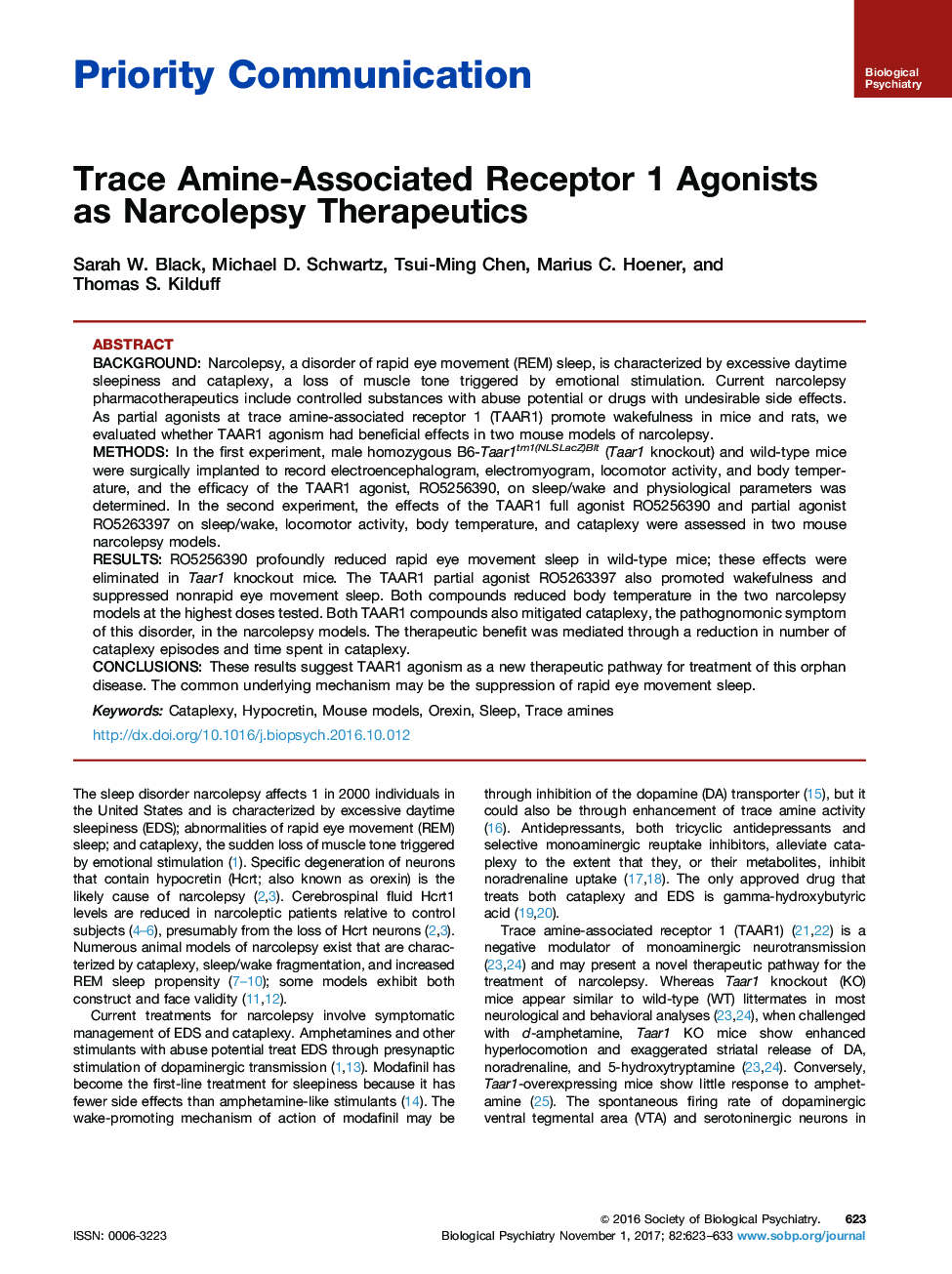| کد مقاله | کد نشریه | سال انتشار | مقاله انگلیسی | نسخه تمام متن |
|---|---|---|---|---|
| 5720399 | 1411314 | 2017 | 11 صفحه PDF | دانلود رایگان |
BackgroundNarcolepsy, a disorder of rapid eye movement (REM) sleep, is characterized by excessive daytime sleepiness and cataplexy, a loss of muscle tone triggered by emotional stimulation. Current narcolepsy pharmacotherapeutics include controlled substances with abuse potential or drugs with undesirable side effects. As partial agonists at trace amine-associated receptor 1 (TAAR1) promote wakefulness in mice and rats, we evaluated whether TAAR1 agonism had beneficial effects in two mouse models of narcolepsy.MethodsIn the first experiment, male homozygous B6-Taar1tm1(NLSLacZ)Blt (Taar1 knockout) and wild-type mice were surgically implanted to record electroencephalogram, electromyogram, locomotor activity, and body temperature, and the efficacy of the TAAR1 agonist, RO5256390, on sleep/wake and physiological parameters was determined. In the second experiment, the effects of the TAAR1 full agonist RO5256390 and partial agonist RO5263397 on sleep/wake, locomotor activity, body temperature, and cataplexy were assessed in two mouse narcolepsy models.ResultsRO5256390 profoundly reduced rapid eye movement sleep in wild-type mice; these effects were eliminated in Taar1 knockout mice. The TAAR1 partial agonist RO5263397 also promoted wakefulness and suppressed nonrapid eye movement sleep. Both compounds reduced body temperature in the two narcolepsy models at the highest doses tested. Both TAAR1 compounds also mitigated cataplexy, the pathognomonic symptom of this disorder, in the narcolepsy models. The therapeutic benefit was mediated through a reduction in number of cataplexy episodes and time spent in cataplexy.ConclusionsThese results suggest TAAR1 agonism as a new therapeutic pathway for treatment of this orphan disease. The common underlying mechanism may be the suppression of rapid eye movement sleep.
Journal: Biological Psychiatry - Volume 82, Issue 9, 1 November 2017, Pages 623-633
